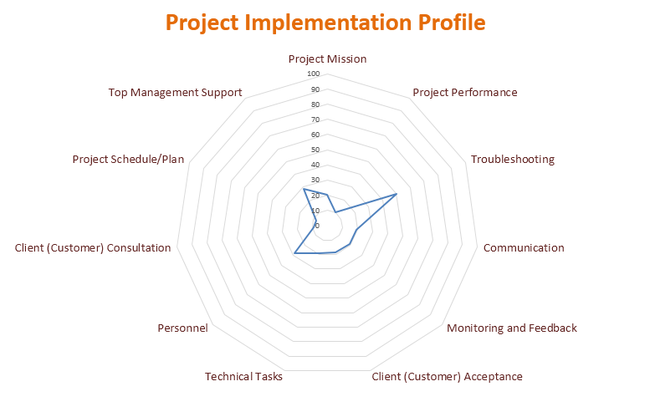
Typical project success criteria mentioned previously are on-time, on-budget and within scope.
This article is to shed some light on 10 Critical Success Factors (CSF), which have empirically proven in contributing directly and indirectly to success criteria above. However, without proper measurement, it would be challenging to have these CSF serve as a reputable benchmark.
The History
Two renowned experts (Pinto & Slevin) conducted this research over 400 projects across industries. They came out a diagnostic instrument to measure these 10 CSF - Project Implementation Profile (PIP). This is 360-degree approach to solicit feedback from all project stakeholders. Over two decades, it has been proven on its practicality and usefulness.
The Wake-up Call
There was on product development project in one multinational organization. Everyone was excited about the project, including the technology partner. However, something does not feel so right, and no-one is able to tell the exact.
After PIP was conducted, the shocking and ugly truth revealed itself. At the quick glance on its CSF rating (see figure below), this project is at the brink of extinction. They have been experiencing unnecessary fire fighting, chasing unreasonable deadlines and stressed working atmosphere.
This article is to shed some light on 10 Critical Success Factors (CSF), which have empirically proven in contributing directly and indirectly to success criteria above. However, without proper measurement, it would be challenging to have these CSF serve as a reputable benchmark.
The History
Two renowned experts (Pinto & Slevin) conducted this research over 400 projects across industries. They came out a diagnostic instrument to measure these 10 CSF - Project Implementation Profile (PIP). This is 360-degree approach to solicit feedback from all project stakeholders. Over two decades, it has been proven on its practicality and usefulness.
The Wake-up Call
There was on product development project in one multinational organization. Everyone was excited about the project, including the technology partner. However, something does not feel so right, and no-one is able to tell the exact.
After PIP was conducted, the shocking and ugly truth revealed itself. At the quick glance on its CSF rating (see figure below), this project is at the brink of extinction. They have been experiencing unnecessary fire fighting, chasing unreasonable deadlines and stressed working atmosphere.

The Priority of Remedial Actions
With the insights of CSF rating, there is always a chance to salvage the project.
- Top priority is given to those CSF rating below 50
- Second priority is given to those CSF rating below 80
Usage of PIP
- Identify early indicators of project failure
- Objectively benchmark across project performance
- Facilitate in strategically and tactically thinking in entire project lifecycle
Concluding Remark
The success of adopting PIP in entire organization requires openness and higher project management maturity. Without that, PIP may be wrongly used as a political weapon. An independent third party could be invited in conducting PIP to ensure all project stakeholders are comfortable in voicing their honest and brutal feedback - anonymously. This third party will compile all feedback into one CSF rating (as seen in figure above).

 RSS Feed
RSS Feed


